Handmade Fresh Ramen Noodles: A Taste of Authenticity
Discover the joy of making fresh ramen noodles at home! This simple recipe is a delightful journey into Japanese cuisine, perfect for any occasion.
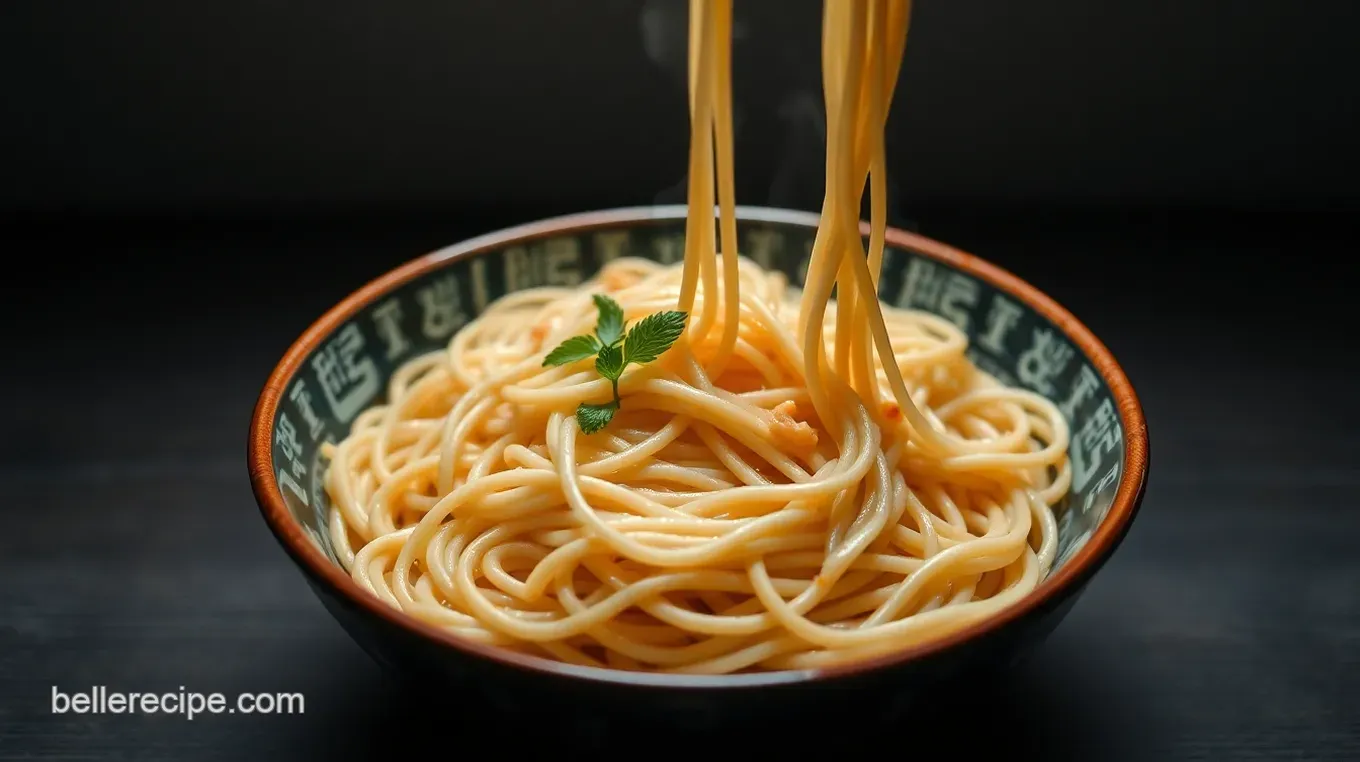
The Comfort of Homemade: Fresh Ramen Noodles
You know those days when you just wanna curl up with a steaming bowl of soup? yeah, that’s me all the time, especially when it comes to fresh ramen noodles .
I remember the first time i attempted making ramen from scratch. it was a chilly saturday afternoon, and i thought, “why not spice things up with an easiest ramen recipe ?” spoiler alert: it turned out amazing, but not without a few hiccups!
Making fresh ramen noodles is like a love letter to your taste buds. imagine pulling that perfectly chewy noodle out of your bowl and slurping it down, the savory broth wrapping around it like an old friend.
Who wouldn’t want that comfort? it’s no wonder that the ramen craze is sweeping across the u.s., popping up in trendy food spots and cozy homes alike.
Those chewy, homemade delights paired with a rich broth? chef’s kiss .
A Taste of Tradition with a Modern Twist
Did you know that ramen originated from china? yep, it's true! but over the years, japan took it and ran with it, making it a beloved staple across the globe.
Ramen has evolved, and you probably know it’s not just a late-night college snack anymore. today, you can enjoy everything from healthy homemade ramen recipe options to upscale varieties served with gourmet toppings.
Plus, making it at home means you control everything—and i do mean everything. who doesn’t love crafting their own flavor masterpiece?
Now, if you’re wondering how long this adventure might take, it’s pretty reasonable. you’ll need about 20 minutes of active prep time , maybe 30 minutes of resting time for that dough, and just a couple of minutes for cooking the noodles.
Perfect for a lazy yet delicious meal! trust me, it's way cheaper than your local ramen shop and yields four hearty bowls !
Why You’ll Love This Ramen
Let’s chat about what makes this dish a notable. first off, the health benefits! homemade ramen can pack a nutritious punch compared to those instant packets filled with questionable ingredients.
You can customize it to your heart’s desire—add in fresh veggies for a homemade veggie ramen twist or go all out with a beef bone broth ramen recipe for that rich, hearty flavor.
It's also super versatile. this dish fits right in for special occasions and cozy nights in alike. whether you’re whipping up bowls for a family dinner or hosting friends with some spicy ramen noodles , your guests will be clamoring for the recipe.
Speaking of which, if you have kids, trust me when i say that kid friendly ramen recipes can be a game-changer during those picky-eater phases!
Another perk? you can experiment like a true chef! go wild with flavors by adding unique toppings. ever tried pho with ramen noodles ? it’s a game changer.
If you’re feeling really adventurous, toss in some unexpected ingredients like pickled veggies.
The Great Journey to Deliciousness Begins
Alright, so you’re probably itching to jump into this delicious world of fresh ramen noodles! it's time to gather your ingredients and check out the easy step-by-step instructions.
I promise, once you dive in, you’ll forget all about those instant noodles you used to settle for. plus, your friends might just start calling you the ramen guru.
You’d deserve that title!
So, let’s get those hands a bit messy and make some culinary magic happen. ready to roll? join me in this tantalizing journey where every slurp is a step towards deliciousness.
We’ll be diving into the actual ingredients next, so stick around!
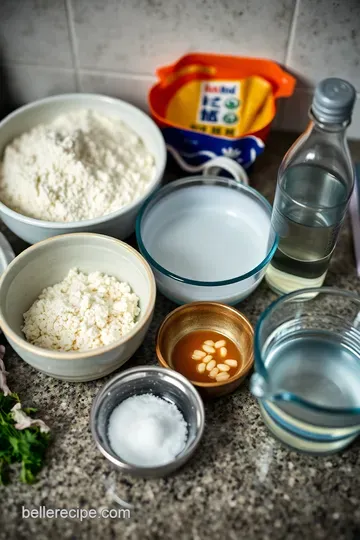
Essential Ingredients Guide: Elevate Your Cooking Game
Welcome to the inside scoop on the secret weapons of the kitchen! whether you’re diving into an easiest ramen recipe or whipping up a healthy homemade ramen recipe , knowing your ingredients is half the battle.
With the right tips, your cooking can go from good to "oh my gosh, did i just make this?"
Premium Core Components
First things first, let's talk premium core components . You want to make sure you’re using the highest quality ingredients. When it comes to measurements , stick to these for success:
- US: 1 cup = 240 ml.
- Metric: 1 liter = 1,000 ml (easy peasy!).
So, what defines quality? look for freshness over anything else . vegetables should be vibrant, herbs fragrant, and proteins should look as fresh as a spring morning.
Just like selecting those fresh ramen noodles at the store!
Storage Guidelines & Freshness Tips
Now, how about storage? most spices have a shelf life of about six months to a year – always check those labels.
Keep your pantry cool and dark, and you’re golden! there’s nothing worse than pulling out old spices that smell like the back of your fridge.
Honestly, fresh ingredients can really elevate your dishes like nothing else.
When picking your produce, look for vibrant colors and firm textures. think of it like dating – you want the freshest catch, right? and if you're stockpiling, consider freezing those herbs in olive oil for some zesty flavor later.
Signature Seasoning Blend
Let’s spice things up with a signature seasoning blend . Some essential spice combos for your kitchen can include:
- Garlic and onion powder – these guys are classics!
- Paprika and cumin – gives a little kick, trust me.
Herb selections ? fresh basil for that italian vibe or cilantro for a little bit of that mexican flair. did you know that regional variations exist? down south, you might find some cayenne pepper sneaking into your spice cabinet, while out west, it’s all about that smoked paprika.
Smart Substitutions
Let's keep it real here—sometimes, you just don’t have that fancy ingredient. no worries! you can use smart substitutions . if a recipe calls for fresh ginger and you’re out, grab some ground ginger instead.
Not exactly the same, but it’ll work for a ginger ramen noodle recipe !
Common Alternatives
And if you’re looking for dietary modifications ? Use zucchini noodles if you’re going gluten-free or want to whip up a Homemade Veggie Ramen that’s packed with greens.
Kitchen Equipment Essentials
Let’s not forget about your tools! Must-have tools include:
- A sharp knife for precision.
- A large pot for those delicious broths—like a Beef Bone Broth Ramen Recipe.
- A good whisk for blending flavors together.
Have you ever complained about your old rolling pin while trying to flatten dough? a wine bottle can step in as a perfect substitute.
Sometimes the best equipment is simply what you have on hand!
Tips & Tricks for Storage Solutions
Storing your ingredients properly is crucial. Keep your spices in airtight containers. Trust me, you won’t believe how much longer they last that way, meaning more Quick Ramen Soup moments for you!
Wrapping It Up
Alright, as we wrap things up, remember that cooking should be fun! try out some spicy ramen recipes or mix flavors for a unique ramen twist.
Your kitchen is a playground, so get creative.
Now, let’s dive into those mouth-watering fresh ramen noodles you're ready to make. Buckle up, because the next part is all about how to transform those quality ingredients into something deliciously unforgettable!
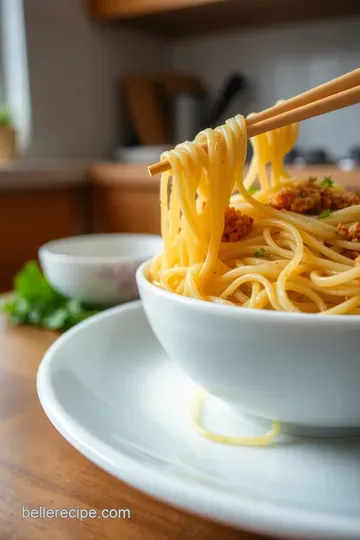
Unlocking the Secrets of Professional Cooking
So, you’re diving into the world of professional cooking? heck yes! whether you dream of whipping up the best fresh ramen noodles in town or just want to impress your friends with a killer meal, understanding some essential preparation steps can make all the difference.
It’s not just about following a recipe; it's about creating a culinary experience. let's get into it!
Essential Preparation Steps
First up, let’s talk mise en place . french for "everything in its place," it's a fancy way of saying you should gather all your ingredients before you start.
Imagine trying to find that elusive can of coconut milk while everything else is cooking. ugh! having everything at the ready saves time and stress.
Next is time management . set a timer on your phone for those critical cooking steps. for example, those fresh ramen noodles need just 2- 3 minutes in boiling water.
You don’t want to overcook them. remember: timing is everything in cooking.
Now, let’s chat organization. i like to use small bowls for ingredients - it makes everything feel like a cooking show! plus, it helps you keep track of what you’ve added and what you’ve missed.
And, of course, don’t forget about safety . keep your cutting boards clean and wash your hands regularly. when cooking raw proteins like chicken, ensure it's cooked to a safe 165° f .
Nothing spoils a meal faster than foodborne illnesses.
Step-by-Step Process
Here’s where the magic happens. Follow these step-by-step instructions to ensure you get it right.
- Gather all your ingredients (hello, mise en place!).
- Control that temperature . For boiling water, heat it until you see those rolling bubbles. Your noodles are going in soon!
- Precision in timing is key. Stick to those 2- 3 minutes for the noodles.
- Visual cues are super helpful. Look for that vibrant yellow color in your noodles. If they start to look too soft, take them off the heat!
Expert Techniques
Alright, let’s dig deeper into some expert techniques. when you've prepared your ramen homemade recipe , pay attention to your broths.
Adding a splash of soy sauce or miso can really elevate the flavor.
Quality checkpoints are important. taste as you go; a spoonful of broth can tell you if it needs a pinch more salt or a dash of spice.
If you're experimenting with a spicy ramen recipe , maybe throw in some chili oil for a kick!
And hey, don't be afraid to troubleshoot! if your noodles aren’t quite right or your rice noodle broth is lacking depth, mix in some fresh herbs or vegetables.
Just like life, cooking is about improvisation.
Success Strategies
Cooking, like any skill, comes with its fair share of mistakes. one common pitfall? overcooking those delicate fresh noodles. remember, if you're aiming for that perfect bowl of ramen, less really is more.
For quality assurance, check that your broths are simmering nicely. If your healthy ramen soup recipes aren't bursting with flavor? It’s time for some more seasoning or fresh veggies!
Want a head start? consider make-ahead options! prepare your broths in advance and just add the fresher ingredients closer to serving time.
This works wonders for a quick ramen soup when you're short on time but still want to impress.
Embrace the Journey
At the end of the day, cooking should be fun! there might be a mess, and your first batch of noodles might not be perfect (hey, we’ve all been there!).
But that’s part of the journey.
Besides, mastering the art of ramen can lead you to some unique ramen recipes, like a beef bone broth ramen recipe or even a pescatarian ramen recipe .
Ready to dive deeper? Let’s transition smoothly into our last section: Additional Information ...
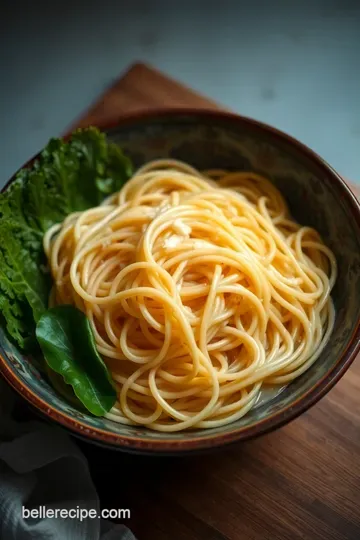
Pro Tips & Secrets
Alright, let’s talk about some pro tips that will turn your fresh ramen noodles from good to absolutely spectacular!
First off, if you wanna nail that chewy texture like the pros, don’t skip the kansui! this magic ingredient (it's basically alkaline water) is what gives ramen its signature flavor and bouncy bite.
I still remember the first time i tried making ramen, and i thought, "what’s the deal with this kansui?!" but trust me, it makes all the difference .
Now, if you’re short on time (who isn’t, right?), you’ll want to focus on those time-saving techniques . When you’re resting the dough, why not prep your broth during that time? Boil your water, throw in some ginger for that zest, and before you know it, you’ve got a delicious ginger ramen noodle recipe happening alongside your noodles!
When it comes to flavor enhancement , i swear by a little bit of soy sauce. just a drizzle can elevate the dish into something unforgettable.
And for presentation, don’t overlook how a sprinkle of sesame seeds or fresh herbs can take your bowl from basic to “wow, i need to post this on instagram!”
Perfect Presentation
Now, let’s chat about how to make your ramen bowl look downright stunning. plating techniques are so important here. use a deep bowl to showcase all the layers of your dish! start with the noodles, add your broth, and then artfully arrange your toppings on top.
Speaking of toppings, how about getting creative with some garnish ideas ? stuff like sliced scallions, a soft-boiled egg, or even some nori can really add that wow factor.
Plus, don’t forget a pop of color! a vibrant green from broccoli or a sprinkle of chili flakes can make your dish visually appealing.
When it comes to visual appeal tips , keep it simple! Too much will make your bowl look chaotic instead of mouthwatering. Less is often more!
Storage & Make-Ahead
Let’s talk practicality - we all have those busy weeks, right? when you make fresh ramen noodles, they can be enjoyed right away, but they store well, too! for storage guidelines, just make sure to keep your noodles in an airtight container in the fridge.
They’ll last for about 3-5 days.
If you’re all about prep, consider making a double batch. fresh ramen noodles can be frozen! yup, just pop them in a freezer bag and they’ll be good for about a month.
Just give them a quick cook from frozen when you're ready – it's like having a shortcut to a quick ramen soup waiting for you!
Creative Variations
This is where the fun begins! you can create so many flavor adaptations from this basic recipe. try adding some fresh herbs or spices to the dough for a unique twist.
Got a hankering for something unusual? create a spicy ramen recipe by adding chili paste to your broth or even making a spicy ramen noodle mix.
Don't forget about dietary modifications ! adapting this into a healthy homemade ramen recipe is super easy with some simple swaps.
Going for a homemade veggie ramen ? toss in loads of colorful veggies for crunch and nutrition!
Check the seasons too! in the fall, why not stir in some roasted pumpkin? in summer, a lighter broth with cool cucumber julienne could hit the spot.
You’ll find that the options are endless!
Complete Nutrition Guide
Last but definitely not least, let’s break down the complete nutrition guide . each serving of your fresh ramen noodles comes packed with around 250 calories.
You’ve got 8 grams of protein for those gains and a minimal amount of fat.
If you're feeling health-conscious, think of this as a blank canvas. Want to make it a healthy ramen soup recipe ? Load it up with your favorite veggies! The fiber might just keep you feeling full longer, which is a win-win!
Portion-wise, one serving is perfect alongside your broth and toppings. But if you're hosting a ramen dinner, I totally get it if you want seconds – it’s just that good!
Remember, cooking is not just about following recipes. it’s about having fun , experimenting, and making it your own. so don’t stress.
Look into into making your fresh ramen noodles, and i promise, the delicious experience is worth every minute in the kitchen! enjoy the journey and celebrate every slurp!
Frequently Asked Questions
What are fresh ramen noodles, and how do they differ from instant noodles?
Fresh ramen noodles are made from scratch using flour, kansui, and water, creating a chewy texture and authentic flavor. Unlike instant noodles, which are precooked and dehydrated, fresh noodles require a quick cooking time, retaining a delightful bite that elevates any broth or topping. Think of them as the stars of your ramen show, compared to the supporting cast of instant options!
Can I make fresh ramen noodles ahead of time?
Absolutely! You can prepare the noodle dough and then refrigerate it for up to 24 hours before rolling it out. Once you’ve cut the noodles, either cook them right away or let them dry slightly on a floured surface and store them in an airtight container for up to 2 days. Just remember, fresh is best, so cook them just before you’re ready to enjoy!
What should I serve with my fresh ramen noodles?
The sky's the limit! Tasty toppings like soft-boiled eggs, green onions, nori, and grilled meats make a fantastic addition. You can also pair your noodles with different broths, like a rich tonkotsu for depth or a light shoyu for a refreshing touch. It’s like dressing up for the occasion—make it as lavish or simple as you like!
How do I store leftover fresh ramen noodles?
If you have leftover uncooked noodles, store them in a sealed bag in the refrigerator. For cooked noodles, toss them with a little oil to prevent sticking before placing them in an airtight container. They can last for 2-3 days in the fridge; just give them a quick rinse under hot water when you’re ready to reheat.
Are fresh ramen noodles healthier than dried noodles?
Not only do fresh ramen noodles offer a delightful texture, but they can also be healthier since you control the ingredients. In contrast to dried noodles, which may contain preservatives and extra sodium, homemade noodles allow you to keep everything fresh and wholesome, just like your grandmother would have done! With the right toppings and broths, you can create a nutritious meal that doesn't skimp on flavor.
Can I make fresh ramen noodles gluten-free?
Yes, you can! Simply substitute the all-purpose flour with a gluten-free flour blend, adjusting the water amount as needed to reach the desired dough consistency. Just keep in mind that the texture may differ slightly from traditional noodles, but they’ll still be delicious! Adding a splash of kansui-style substitute can also help mimic the authentic ramen experience.
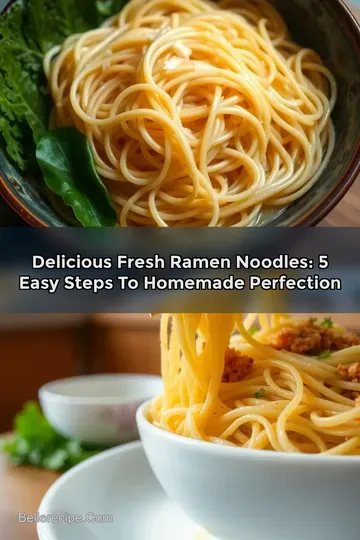
Handmade Fresh Ramen Noodles: A Taste of Authenticity Card

⚖️ Ingredients:
- 2 cups (250g) all-purpose flour
- ½ cup (125ml) water
- 1 teaspoon (5g) kansui (alkaline mineral water)
- ¼ teaspoon (1g) salt
- Water (for boiling)
🥄 Instructions:
- Step 1: In a bowl, combine flour, kansui, and salt. Gradually add water while mixing until a shaggy dough forms.
- Step 2: Transfer the dough to a clean surface. Knead for about 5-10 minutes until smooth.
- Step 3: Wrap the dough in plastic wrap. Allow it to rest for 30 minutes at room temperature.
- Step 4: Divide the dough into manageable portions. Roll out each portion thinly using a rolling pin or pasta machine.
- Step 5: Fold the rolled dough and slice into thin strips (about 1/4 inch width).
- Step 6: Bring a large pot of water to a rolling boil. Add noodles and cook for 2-3 minutes until al dente. Drain in a colander and rinse under cold water to stop cooking.
Previous Recipe: Zesty Vegan Kimchi: My Easy Recipe for Fermented Flavor
Next Recipe: My Favorite Smoking Salmon in a Smoker: A Juicy, Flavorful Recipe
